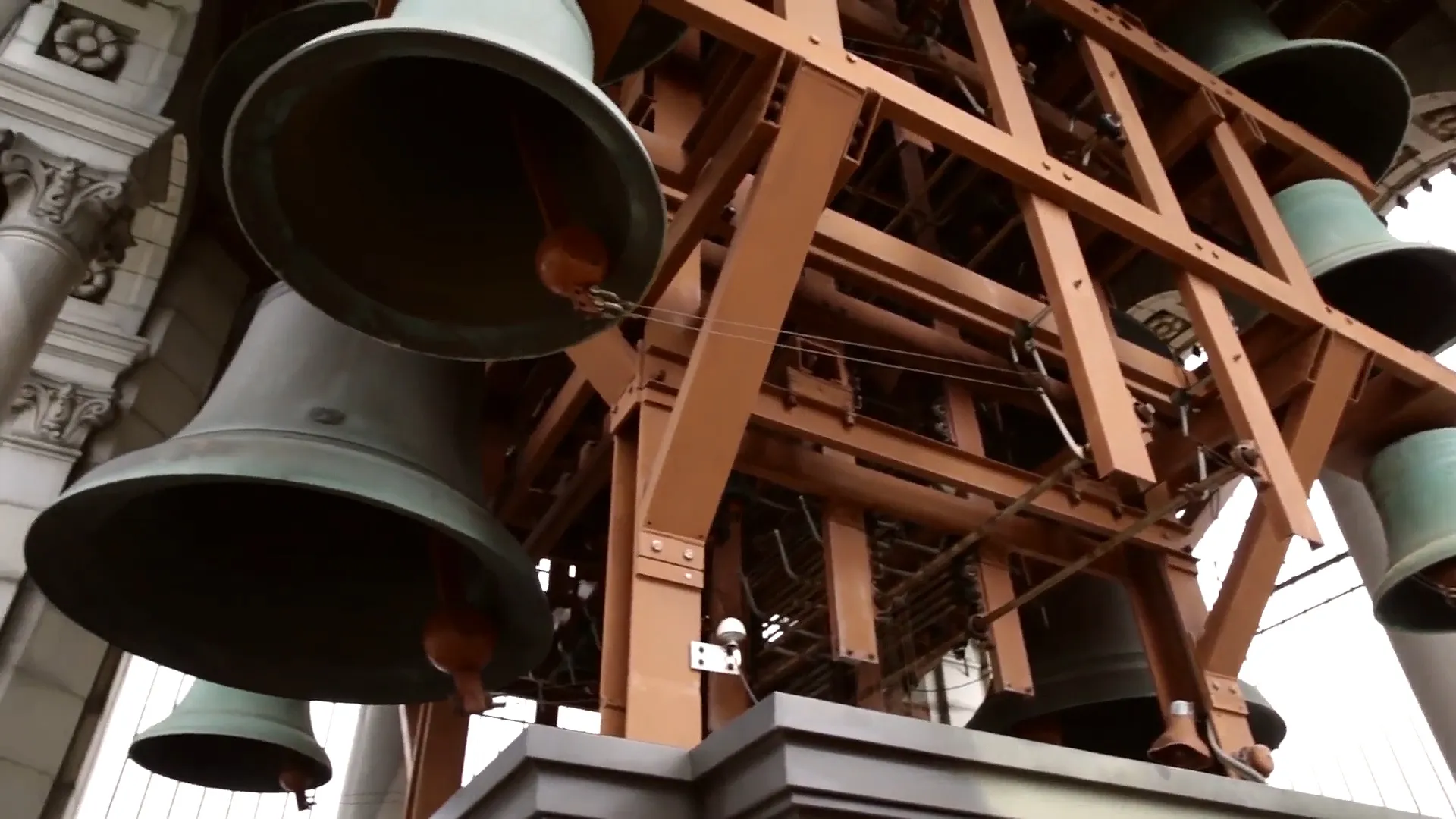From the Guild of Carillonneurs in North America:
A carillon is a musical instrument composed of at least 23 carillon bells, arranged in chromatic sequence, so tuned as to produce concordant harmony when many bells are sounded together. It is played from a keyboard that allows expression through variation of touch. The keys are struck with the half-closed hand. In addition, the larger bells are connected to foot pedals.
Berkeley's carillon was originally a 12-bell chime from the Taylor bellfoundry in 1917. It was expanded with Paccard bells in 1978 by the Class of 1928 (thus renaming the instrument 'Class of 1928 Carillon'). It now has sixty-one (61) bells with a keyboard console designed by Richard Strauss, due to a generous donation by Jerry and Evelyn Chambers.

The Chambers donation also endows a full-time University Carillonist position, who manages daily recitals and teaches carillon on campus. Jeff Davis is the third such Carillonist, after Ronald Barnes and Geert D'hollander. Teaching and practice time is held inside Sather Tower, on a practice console (that rings metal pipes instead of large bells).
During the school year, there is a weekly recital schedule. The carillon is played at 7:50am, 12 noon, and 6pm for ten minutes from Monday to Saturday. On Sundays, a one-hour concert is scheduled, with programs available at the front door of the tower. On Friday and Saturday evenings until 7pm, carillon students are practicing, working out last kinks in their performances.
Sather Tower is typically open to the public during the day (except for Sunday concerts), and you can watch the noon recitalists from the observation deck.